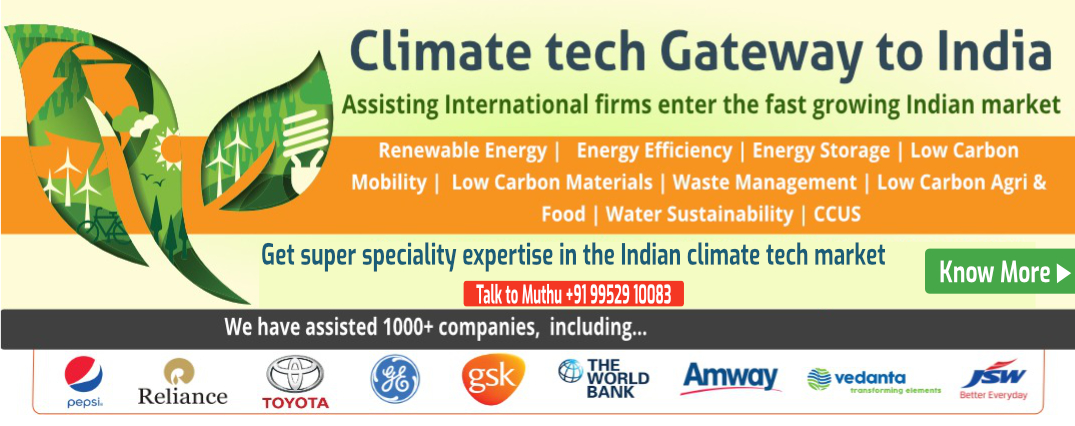This post is a part of Climate G2I Intelligence series from Energy Alternatives India (EAI), India’s leading climate-tech consulting firm.
G2I stands for Gateway 2 India, and provides comprehensive market intelligence and go-to market assistance for International firms entering the Indian climate-tech market. More about Climate G2I from here
The recent announcement by First Solar, a leading global manufacturer of thin-film photovoltaic solar modules, to establish a 3.3 GW manufacturing facility in India is huge.This significant investment, backed by a $245 million loan from the US International Development Finance Corporation (DFC), marks a major turning point for India’s solar ambitions and presents exciting opportunities for international players like First Solar.
First Solar, renowned for its high-efficiency, thin-film solar modules, brings valuable expertise to the Indian market. Their Series 6 modules boast superior performance in high temperatures and dust-laden environments, well-suited for India’s diverse climatic conditions. Additionally, their focus on vertical integration and sustainable manufacturing practices aligns with India’s push for self-reliance and green technologies.
Sector Analysis: India’s Soaring Solar Ambitions
Net Zero by Narsi
Insights and interactions on climate action by Narasimhan Santhanam, Director - EAI
View full playlistIndia currently boasts 50.84 GW of installed solar capacity, ranking 5th globally.The market represents a $20.4 billion opportunity, expected to reach $92.6 billion by 2030.Thin-film technology holds a 10-15% market share in India, presenting First Solar with a substantial addressable market.
India, with its growing population and energy demands, has set ambitious goals to achieve 175 GW of installed solar capacity by 2022 and 450 GW by 2030. Driven by factors like reducing dependence on fossil fuels, increasing energy security, and combating climate change, the Indian solar market presents a lucrative prospect for international investors and manufacturers.
India’s solar energy market is soaring, but its solar panels are largely imported. This presents a golden opportunity for international players to enter the local manufacturing scene.
The Indian government is actively rolling out the welcome mat with production incentives, streamlined land acquisition, and a focus on domestic manufacturing. Partnerships like Hanwha Q CELLS-Waaree Energies showcase the power of collaboration, fostering technology transfer and market access. While challenges like complex regulations and workforce gaps persist, the future shines bright with growing rooftop solar demand, export potential, and ambitious indigenization plans.
This post is a part of Climate G2I Intelligence series from Energy Alternatives India (EAI), India’s leading climate-tech consulting firm.
G2I stands for Gateway 2 India, and provides comprehensive market intelligence and go-to market assistance for International firms entering the Indian climate-tech market. More about Climate G2I from here





 Our specialty focus areas include
Our specialty focus areas include



